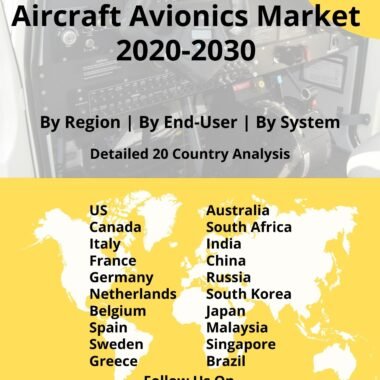Description
Defense Gyroscope Market
Frequently Asked Questions of Gyroscope Market
Drones, ships, and airplanes all use defense gyroscopes market for navigation. They orient and stabilize robots, research equipment, and cameras. They maintain satellites’ proper pointing, enabling voice and data communications that link our planet and support the international economy. RLGs, as opposed to mechanical gyros, use two laser beams moving in opposition in a path outlined by three mirrors. The gyro calculates angular velocity by measuring the frequency difference between the two beams, which aids in determining the direction that the platform or aircraft is travelling in. RLGs don’t have any moving parts like mechanical gyros do, which reduces accuracy and over time increases “drift” due to friction. An RLG really wanders by only 0.0035 degrees per hour as opposed to a mechanical gyro, which can drift by 0.1-0.01 degrees per hour.
RLGs are perfect for incorporation into contemporary inertial navigation systems, which combine gyros, computers, and accelerometers to determine the position of an aircraft, ship, or other vehicle. These systems benefit from RLGs’ accuracy, dependability, and compact size. The interference of light is also used by fiber optic gyroscopes to determine mechanical rotation. A coil of fiber optic cable as long as 5 km carries the two sides of a split beam in opposition to one another. It uses the Sagnac effect, just like the ring laser gyroscope does. Electronic gadgets often contain miniature gyroscopes known as microelectromechanical systems (MEMS) gyroscopes.
The vibrating component incorporates the Foucault pendulum’s concept. Initially utilized for military purposes, this type of gyroscope has since become more widely used in industry. Motion sensing with HIGH PERFORMANCE is helpful in several fields that are thought to have tough surroundings. Since many years ago, critical navigation, flight control, and stabilization functions have been performed by means of inertial measurement units (IMU), inertial navigation systems (INS), and other systems based on high-performance accelerometers and gyroscopes, particularly in situations where GNSS and GPS signals are lost or unavailable. Gyro assemblies have historically been used in the naval field for navigation using gyrocompass. Because of recent advancements in MEMS accelerometer and gyroscope technology, inertial systems have become increasingly common in industrial applications. This growth is mostly attributable to the ability to integrate new features at cheap cost and with high performance.
Major Factors Driving the Growth of defense Gyroscope market size
Increasing demand for a variety of defense platforms will drive the growth of defense gyroscope market size. Gyroscopes are used in multiple defense platforms such as airborne, naval, land based platforms and also on precision guided munitions and missiles. Since there is an increasing demand for all these platforms due to procurements programs, sustainment programs and modernization programs.
Trends Influencing the Growth of defense Gyroscope market growth
Defense gyroscope market trends, the difference in propagation times between counter-propagating beams moving in opposite directions via closed or open optical pathways is sensed by optical gyroscopes. defense gyroscope market trends, the counter-propagating light beams exhibit a phase difference as a result of a rotation-induced shift in the path lengths. Physically, this rotation-induced phase difference is made up of the Sagnac phenomenon, which underlies all optical gyroscopes. Advancements in optical gyroscopes and MEMS gyroscopes will influence the defense gyroscope market growth..
Market Forecast & Dynamics
Defense gyroscope market forecast, Increasing defense spending will drive the market for new procurement activities. defense gyroscope market analysis, the procurement will also be driven by prevailing geo political conditions in Europe and the Asia Pacific. defense gyroscope market analysis, cross border aggression will give way to increased procurement of a wide range of platform that use gyroscopes. The majority of the growth will be from the Europe and Asia Pacific region.
Market Analysis for Recent Developments
Defense gyroscope market reports, the T-150 UAV has a wingspan of 2.5 m, a length of 4.8 m and a weight of 110 kg. The T-150 UAV is capable of carrying more than 400 lbs (180 kg) of payload for surveillance purposes, including cameras and sensors such as radar; this is nearly twice the size of Merlin’s internal payload bay and making it more suitable for carrying heavier loads would add another important capability than just conducting ASW attacks from 30 km away.
Defense gyroscope market reports, in order to update the electronic warfare system on two U.S. Air Force F-15E fighters, Boeing has begun installing a digital avionics system made by BAE Systems. Eagle Passive Active Warning and Survivability System, which replaces the fleet’s present analogue technology-based EW self-protection suite, will be installed on a total of 43 aircraft units with the assistance of the two firms, according to a statement released by Boeing on Thursday. In the recent past, USAF awarded the aircraft builder a $79.6 million sole source contract to support EPAWSS low-rate initial production. In the recent past, USAF issued a $189.3 million amendment to broaden the scope of work.
The market is a linchpin in the realm of navigation, stability, and targeting systems for military applications. Gyroscopes, utilizing the principles of angular momentum to maintain orientation and stability, play a crucial role in a wide array of defense platforms, including aircraft, naval vessels, and ground-based vehicles. The market is witnessing substantial growth, driven by the increasing complexity of defense systems, the demand for precision-guided munitions, and the necessity for reliable navigation in challenging operational environments. Technological innovations within the Defense Gyroscope market include the development of Micro-Electro-Mechanical Systems (MEMS) gyroscopes, fiber-optic gyros, and ring laser gyros, contributing to improved accuracy, miniaturization, and durability. These innovations enable precise measurement of angular velocity and play a vital role in stabilizing platforms during maneuvers or in the presence of external forces.
Geopolitical considerations significantly influence market dynamics, with nations strategically investing in advanced Defense Gyroscope technologies to enhance the agility, accuracy, and effectiveness of their defense forces. In 2023, the global Defense Gyroscope market reflects a commitment to technological excellence, ensuring the reliable performance of navigation and stabilization systems critical to the success of military operations across diverse domains.
![Global_Defense_Gyroscope_Market_2024-2034[1] Global_Defense_Gyroscope_Market](https://aviationanddefensemarketreports.com/wp-content/uploads/2022/08/Global_Defense_Gyroscope_Market_2024-20341.jpg)






